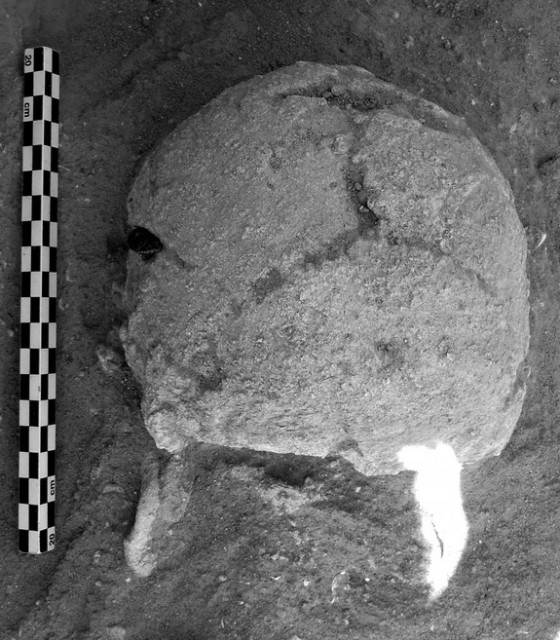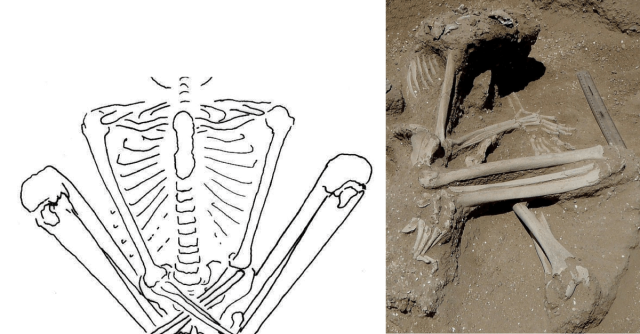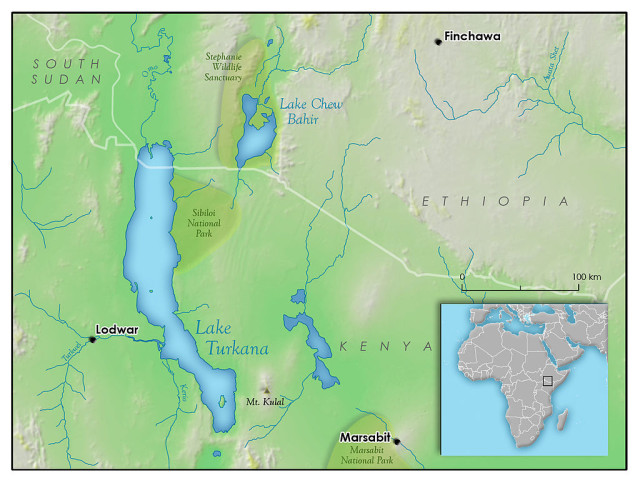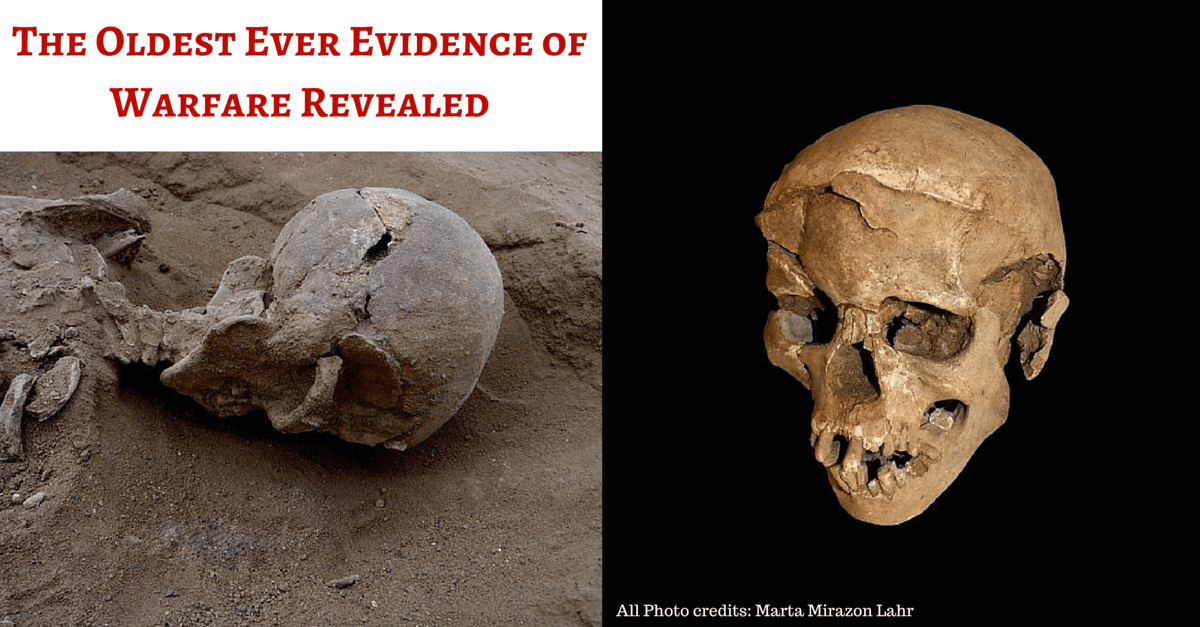Research recently published from an archeological dig near Lake Turkana in Kenya shows strong evidence of warfare among hunter-gatherers. Though it has often been suggested that the inclination towards violence and warfare certainly could exist during this period, there have been some advocating that the Paleolithic period was largely peaceful. Though the sample size is small at twelve skeletons, the evidence of planned, organized violence is clear.
Out of the twelve skeletons, ten show signs of violent death at the hands of other humans. Two had remains of stone arrowheads while most had lacerated and crushed skulls and jawbones. Though only two had arrowhead remains, at least five had nicks, scrapes, and piercings typical of arrow wounds. One had a piece of what appears to be an obsidian blade lodged in his skull as well.

Four of the group were found in a position indicating that their hands and feet were bound, many likely women and at least one woman who was pregnant or recently given birth. At least one bound woman had broken knees as well. None of the bodies seemed as if they were purposefully buried.
This along with the binding of women seems to show that this was likely a planned, quick raid on the people with the idea of killing and moving on quickly, otherwise, it would have been at least a practicality to have some disposal of the bodies.

As far back as the dawn of civilization, there has been warfare, now we know that it likely happened even earlier. Violence and murder are tricky concepts to discuss in the earliest periods of human history. Humans do have an innate set of morals (though even that is a disputed concept) and so stories of murdering fellow humans can be hard to accept, but the fact is that there were so many reasons to kill, even back in the simpler era of finding and eating food.
By far one of the most likely motivators for this attack was food. this could have meant that the attackers sought some of the collected food (roots, berries, etc.) as groups would certainly carry a decent amount of stockpiled food if they could. Starving and out of luck hunters could find it an easier proposition to attack some unsuspecting humans than attempted another hunt. Secondly, regarding food, the two groups could have been in competition for the same food source or region.
Outside of food, there are many unknowable reasons for violence, from cultural differences/misunderstandings to some disagreement between the groups. Though evidence such as lack of proper burials suggests that all of the deceased were victims from the same tribe, it is possible that some of the attackers fell as well.
The conflict was also larger than twelve as those are just the most complete skeletons discovered so far. As many as 30 or more people were killed during or shortly after this incident. This was fairly large for hunter-gatherer groups, but this group was likely able to stay close to the lake, which allowed them easier food access to grow larger.

Definitions classify warfare as a conflict between two societies, so while the scale was small, this incident can still be described as a single battle war, with perhaps 60-70 total people involved.
Though more details would be helpful in discerning what exactly occurred there.
